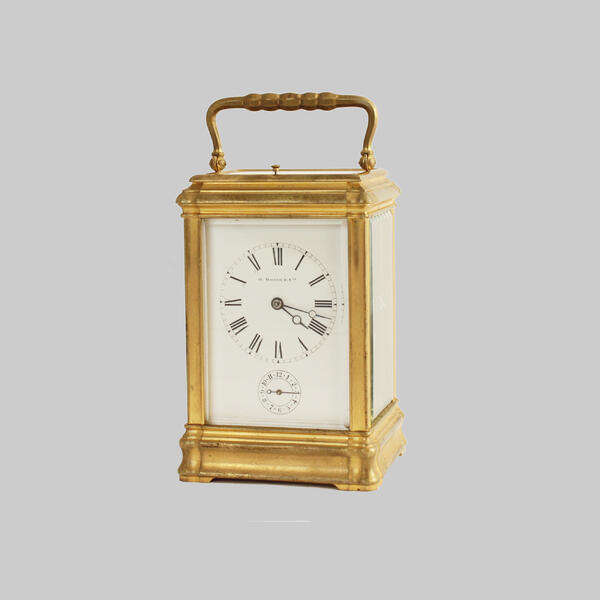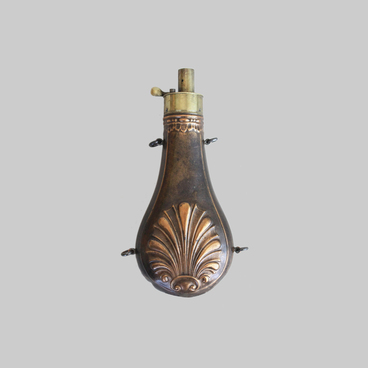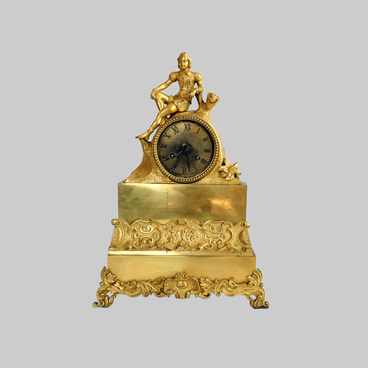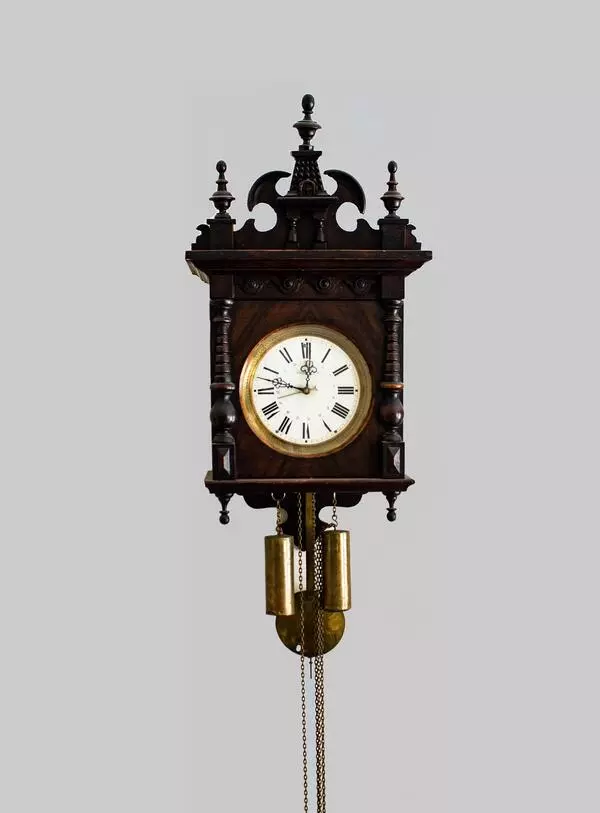The item displayed is the Yakushkin family heirloom. The last owner was Vladimir Yakushkin, the great-great-grandson of the Decembrist Ivan Yakushkin. A carriage clock is a type of travel clock. It got its name because these clocks were frequently placed in carriages.
The first such travel clock was created by the French watchmaker Jean Libour in 1451. He placed the time keeping mechanism in a copper case and installed a striking device in it. The most important condition for obtaining information about travel time was the sound signal. In the dark, when you couldn’t light a candle or lamp, the chiming or beep of the clock announced how long it was necessary to go to the nearest settlement. Therefore, improving the clock for the traveler, the craftsmen, took care of developing the combat system and increasing its volume.
In France at the beginning of the 19th century, carriage clocks were called “officer clocks”. They received widespread recognition thanks to Napoleon, for whose campaigns the first copy was created. Emperor Napoleon Bonaparte attached great importance to the discipline of his highest command personnel. Among other things, officers needed reliable and accurate clocks that could be with them at all times, both at home and abroad. When watchmakers received an order for a carriage clock, it would invariably be accompanied by a note something like – “clock for an officer”.
Carriage clocks reached the masses in the early 20th century. Their frame was made of brass and glazed on all sides. In the upper part there was a movable curving handle to carry it by. The upper edge of the case was complemented by an oval glazed window through which you could see the mechanism at work. The dial was made of porcelain and Roman numerals were used on the face. On the side of the case opposite the dial, there was a glazed door that opened access to the mechanism. The mechanism was wound up with a special key and had a precision adjustment. In a carriage clock, the running gear was usually standard sized, and was placed in a metal case. The most common case was in the form of a cornice, in which a chronometer was placed, as well as a running gear with the striking device. Sometimes these clocks had calendars and bells.
The first such travel clock was created by the French watchmaker Jean Libour in 1451. He placed the time keeping mechanism in a copper case and installed a striking device in it. The most important condition for obtaining information about travel time was the sound signal. In the dark, when you couldn’t light a candle or lamp, the chiming or beep of the clock announced how long it was necessary to go to the nearest settlement. Therefore, improving the clock for the traveler, the craftsmen, took care of developing the combat system and increasing its volume.
In France at the beginning of the 19th century, carriage clocks were called “officer clocks”. They received widespread recognition thanks to Napoleon, for whose campaigns the first copy was created. Emperor Napoleon Bonaparte attached great importance to the discipline of his highest command personnel. Among other things, officers needed reliable and accurate clocks that could be with them at all times, both at home and abroad. When watchmakers received an order for a carriage clock, it would invariably be accompanied by a note something like – “clock for an officer”.
Carriage clocks reached the masses in the early 20th century. Their frame was made of brass and glazed on all sides. In the upper part there was a movable curving handle to carry it by. The upper edge of the case was complemented by an oval glazed window through which you could see the mechanism at work. The dial was made of porcelain and Roman numerals were used on the face. On the side of the case opposite the dial, there was a glazed door that opened access to the mechanism. The mechanism was wound up with a special key and had a precision adjustment. In a carriage clock, the running gear was usually standard sized, and was placed in a metal case. The most common case was in the form of a cornice, in which a chronometer was placed, as well as a running gear with the striking device. Sometimes these clocks had calendars and bells.




